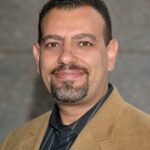The 2015 ACR Workforce Study reported that in 2015, there were 4,997 rheumatology professionals but 6,115 were needed in the U.S.1 The study predicted that by 2030 the demand will be for 8,184 professionals, but the supply is expected to only be 3,455 clinicians. Part of the reason for the shortfall is that 50% of rheumatologists are expected to retire in the next 10–15 years.1 The ACR is focused on finding solutions to the gap. In October 2021, the ACR Board of Directors approved a three-year workforce plan developed by the Workforce Solutions Committee. (Note: Learn more in the May article, “ACR Workforce Solutions.)
In the midst of this significant rheumatology workforce shortage, some practices have fared well in recruiting new physicians. To find out how they’re doing it, the ACR’s Committee on Rheumatologic Care (CORC) held a Town Hall on Physician Recruitment on April 13, welcoming representatives from four practices in different parts of the country to share the secrets behind their success stories.
Highlight Value

Dr. Soloman
Arizona Arthritis & Rheumatology Associates (AARA), Phoenix, has 16 rheumatologists and 27 advanced practice providers on staff. The big news? It currently receives more applications than it has positions to fill. Part of the practice’s approach to recruiting new rheumatologists is to make sure candidates see the value of joining the practice, said Nehad Soloman, MD, a rheumatologist and AARA’s medical director of research. The AARA offers a team approach, pairing a rheumatologist with two advanced practice providers to patient care, a three-year path to equal partnership and research opportunities.
AARA also keeps the applicant pool large by attending meetings of the Coalition of State Rheumatology Organizations (CSRO) to “interview fellows on the spot, telling them about our team and our practice,” and by maintaining strong contact with fellowship alma maters and nearby fellowship programs in Tucson and at the University of New Mexico, Dr. Soloman said. “I think part of our success is that we’ve had a lot of young blood join us in the last five years, and they tell their friends, co-fellows or folks who are still in fellowship and want to follow in their footsteps. So they bring them to the table as well.”
Build a Community

Dr. Ruth
Natasha Ruth, MD, MS, pediatric division director at the Medical University of South Carolina, Charleston, has a much smaller practice, with three (soon to be four) rheumatologists on staff. To attract new rheumatologists, Dr. Ruth emphasizes the practice’s close relationships with other groups, including the university’s adult rheumatology division and the adult rheumatology fellowship program. In fact, the adult rheumatologists take on some of the pediatric rheumatology call work, so she can promise candidates a less strenuous schedule. “That makes recruiting someone incredibly easier,” she said.



